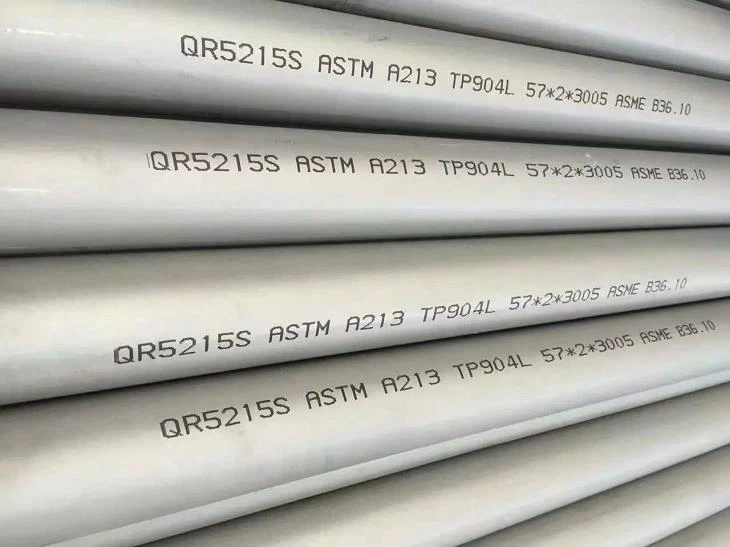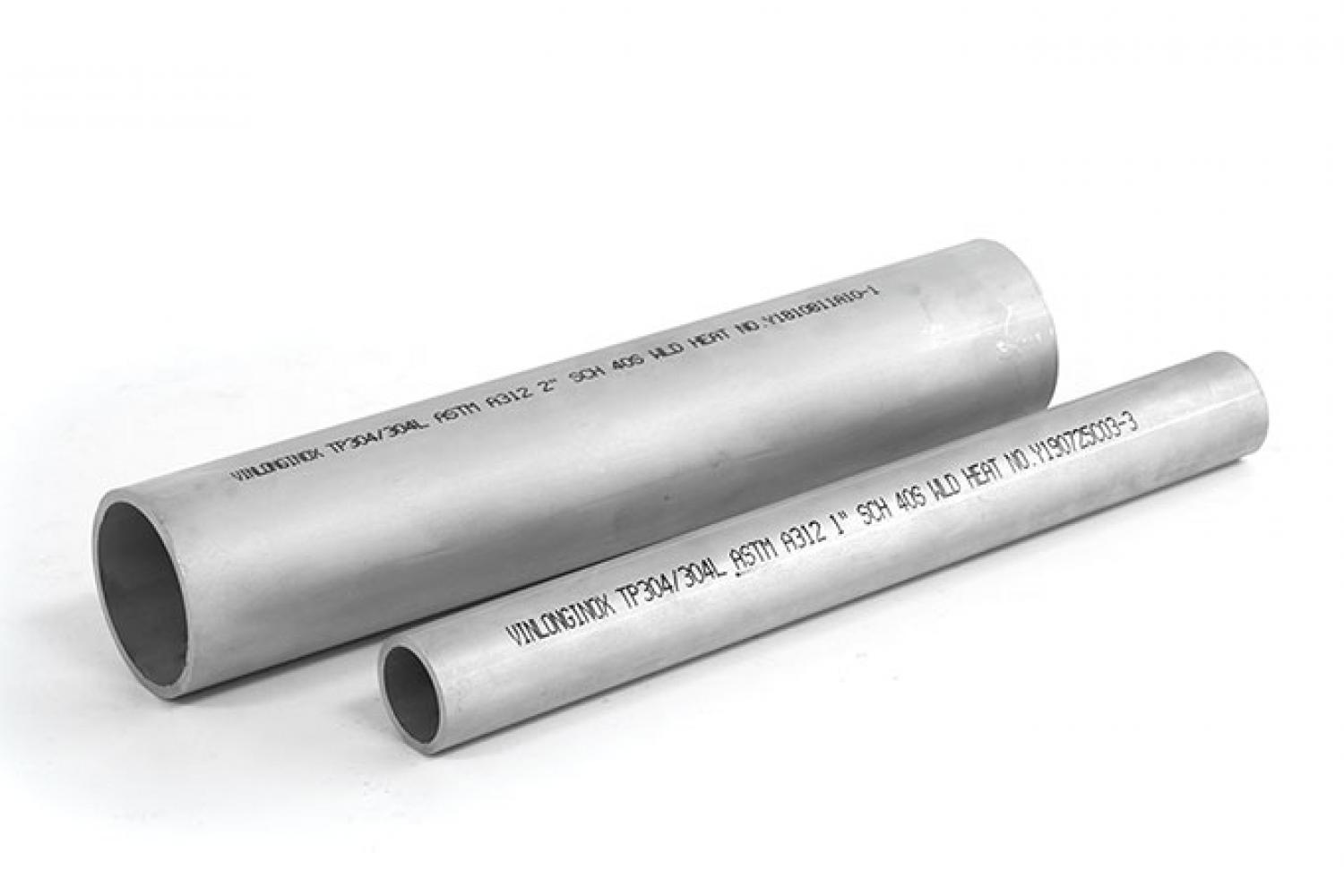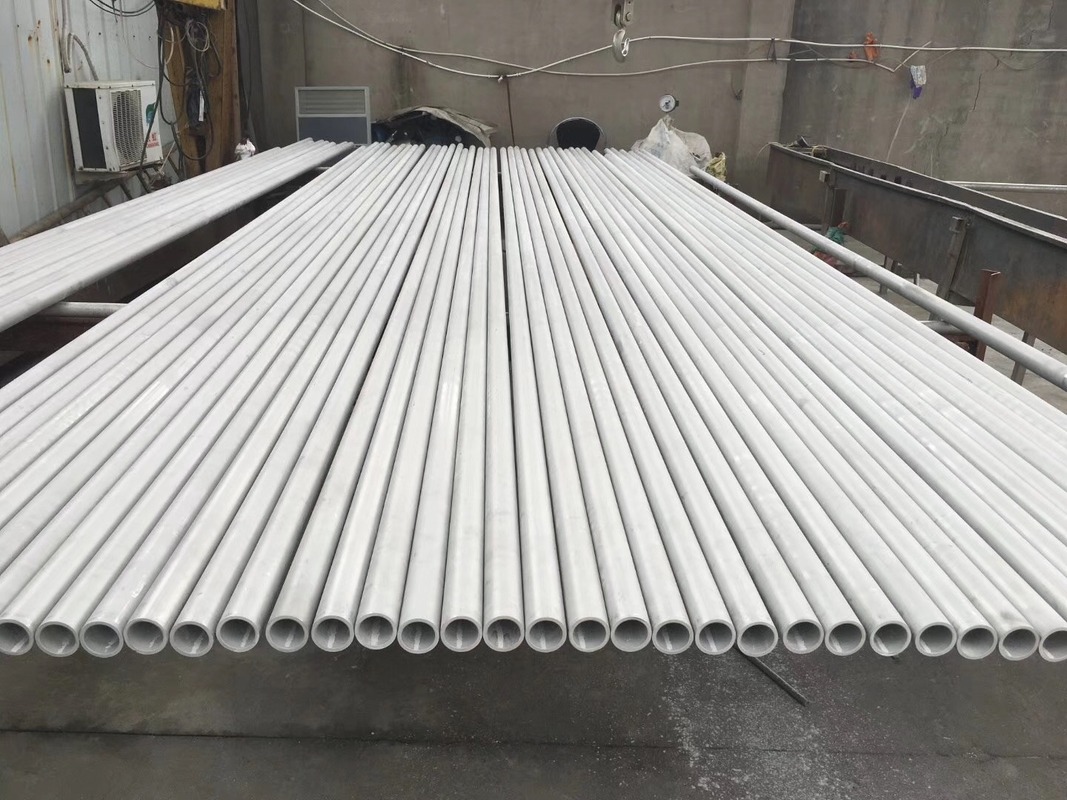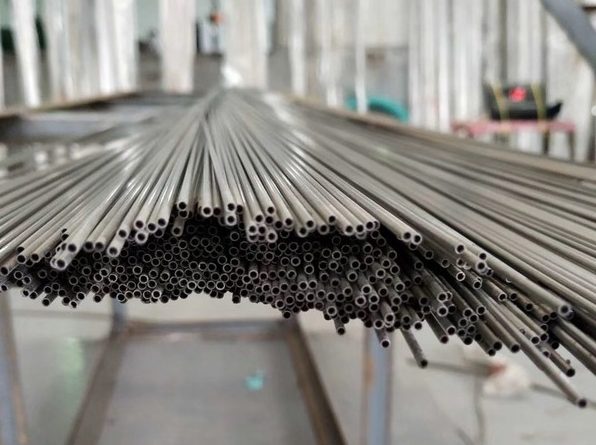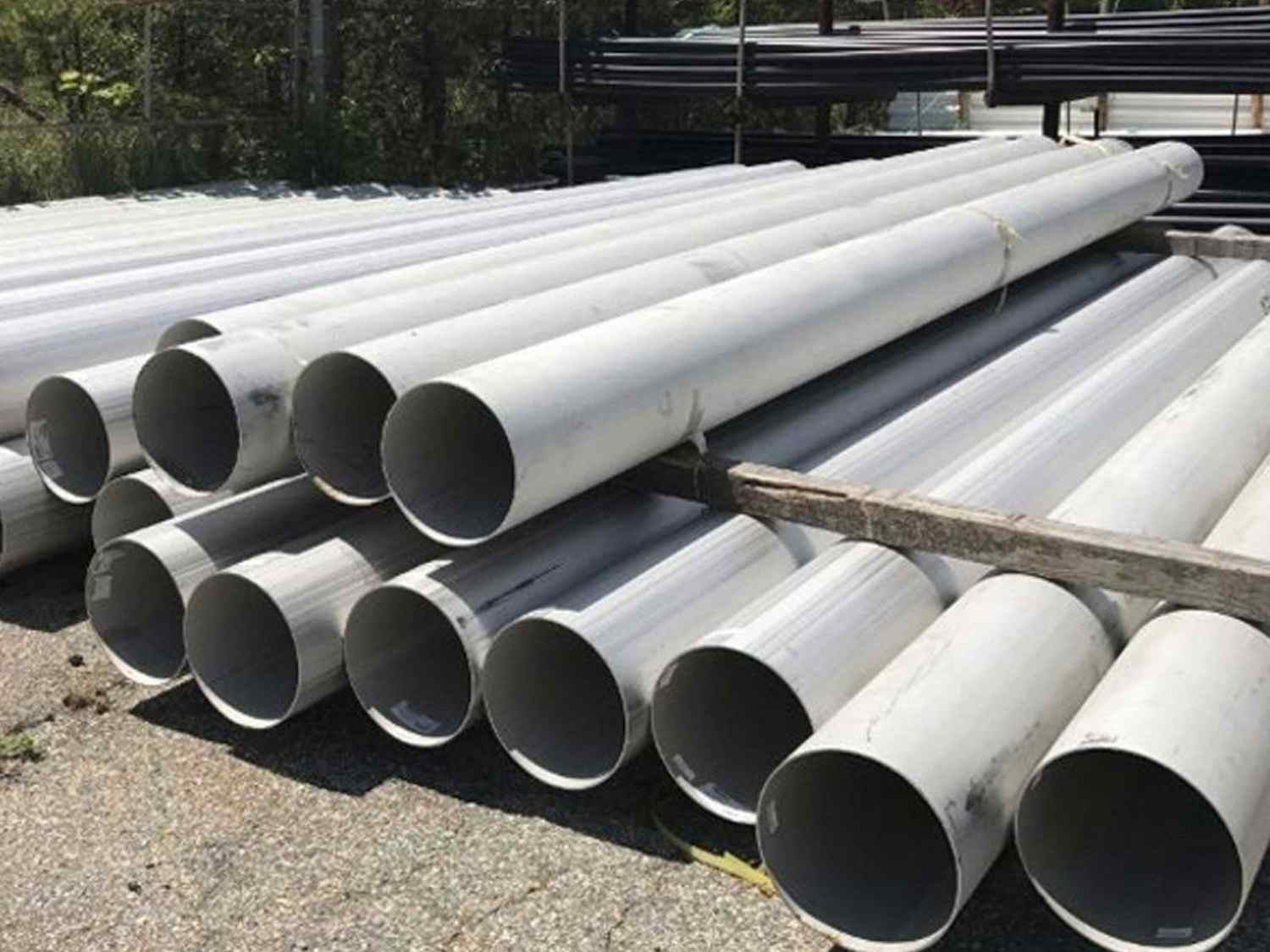309/309S Alloy Steel Welded Stainless Pipe for High Temperature Service
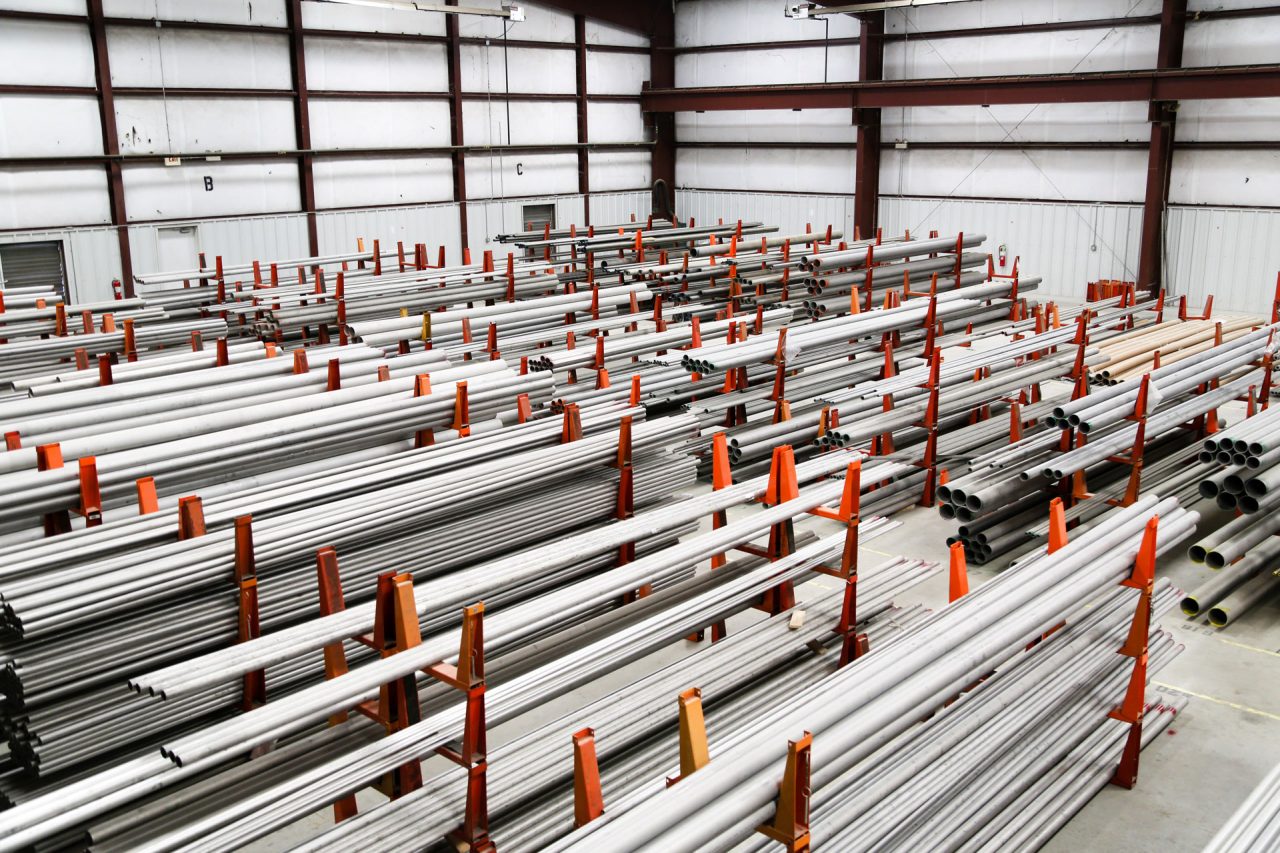
Scientific Analysis of Alloy 309 and Alloy 309S Welded Stainless Steel Pipe for High Temperature Service
Alloy 309 (UNS S30900) and Alloy 309S (UNS S30908) are austenitic chromium-nickel stainless steels renowned for their exceptional performance in high-temperature environments. These alloys are specifically designed for applications where oxidation resistance, high-temperature strength, and corrosion resistance are critical. Our company specializes in manufacturing welded stainless steel pipes from these alloys, tailored for high-temperature service in industries such as petrochemical, power generation, and furnace manufacturing. The primary distinction between Alloy 309 and 309S lies in the carbon content; 309S features a lower carbon level to enhance weldability and minimize carbide precipitation during welding, which is particularly advantageous for welded pipe constructions. Scientifically, the austenitic structure of these alloys, stabilized by high nickel content, ensures ductility and toughness even at elevated temperatures. The chromium content forms a protective oxide layer that resists scaling and oxidation up to 1900°F (1038°C) in continuous service and 2000°F (1093°C) in intermittent service. In welded pipes, this translates to reliable performance in heat exchangers, boiler tubes, and radiant tubes where thermal cycling is prevalent. Our production processes involve electric fusion welding (EFW) or submerged arc welding (SAW), ensuring seamless integration without compromising the alloy’s inherent properties. Microstructural analysis reveals a fully austenitic matrix with minimal delta ferrite, which enhances resistance to sigma phase embrittlement during prolonged exposure. Thermodynamic modeling using software like Thermo-Calc predicts phase stability, confirming the absence of deleterious phases below 1500°F. Electrochemical tests in simulated high-temperature environments show low corrosion rates, less than 0.1 mm/year in sulfur-bearing atmospheres. Our welded pipes are available in schedules from 10 to 160, diameters from 1/2″ to 24″, and lengths up to 12 meters, customizable for specific applications. Quality assurance includes hydrostatic testing, ultrasonic inspection, and eddy current testing to detect weld defects. Environmental considerations incorporate recycled scrap in melting, reducing carbon footprint. Comparative studies with Type 304 reveal superior high-temperature performance of 309/309S, albeit at higher cost due to increased alloying elements. This introduction highlights the scientific foundation and practical utility of our Alloy 309 and 309S welded pipes, setting the stage for in-depth analysis.
The scientific prowess of these alloys stems from their balanced composition, where chromium (22-24%) and nickel (12-15%) synergistically enhance oxidation resistance through the formation of a stable Cr2O3 scale, as evidenced by parabolic oxidation kinetics with rate constants around 10^-12 g²/cm⁴/s at 1000°C. For welded pipes, the heat-affected zone (HAZ) maintains integrity due to low carbon in 309S, preventing sensitization and intergranular corrosion. Creep rupture tests demonstrate life extensions beyond 10,000 hours at 1200°F under 10 ksi stress, attributed to solid-solution strengthening. Fatigue properties, with endurance limits exceeding 200 MPa, ensure durability in vibrating environments like turbine exhausts. Our manufacturing employs vacuum arc remelting for purity, with impurity levels below 50 ppm for oxygen and nitrogen. Metallographic examinations using optical microscopy show equiaxed grains (ASTM 4-8), optimizing mechanical isotropy. In applications such as annealing furnaces, our pipes withstand carburizing atmospheres, forming protective carbides without embrittlement. Non-destructive evaluation (NDE) protocols, including radiographic testing per ASME standards, guarantee defect-free welds. Sustainability is prioritized through energy-efficient induction heating during welding. This extended overview underscores the engineering excellence embedded in our products, facilitating advanced high-temperature solutions.
Product Description
Our Alloy 309 and 309S welded stainless steel pipes are engineered for superior performance in high-temperature service, offering a robust solution for demanding industrial applications. These pipes are produced using advanced welding techniques such as TIG, MIG, and SAW, ensuring high-quality welds with full penetration and minimal distortion. Available in seamless equivalents but focused on welded forms for cost-effectiveness in larger diameters, our pipes range from NPS 1/2″ to 24″, with wall thicknesses from Sch 5S to Sch 160, and custom lengths up to 40 feet. The surface finish can be pickled, annealed, or polished to enhance corrosion resistance and aesthetics. Alloy 309 provides excellent strength at temperatures up to 1900°F, while 309S’s low carbon content (0.08% max) improves weldability, making it ideal for fabricated structures. Scientifically, the welding process is optimized to control heat input below 1.5 kJ/mm, preventing excessive grain growth in the HAZ as per Schaeffler diagram predictions. Thermal conductivity of ~15 W/m·K at room temperature ensures efficient heat transfer in heat recovery systems. Density at 7.89 g/cm³ offers a favorable strength-to-weight ratio. Our pipes undergo post-weld heat treatment at 1900-2100°F followed by rapid quenching to restore corrosion resistance. Applications include kiln linings, where resistance to thermal shock exceeds 500 cycles without cracking. In petrochemical crackers, they handle hydrocarbon streams at 1800°F, resisting coking via silicon additions. For power plants, boiler superheater tubes benefit from creep resistance, with Larson-Miller parameters indicating long-term stability. Quality control integrates tensile testing per ASTM E8, yielding consistent values. Customization includes beveling ends for easy installation. Environmental impact is minimized through closed-loop water systems in pickling. Comparative analysis with Alloy 310 shows similar performance but 309’s lower nickel for cost savings. This description illustrates our commitment to delivering reliable, high-performance welded pipes.
To delve deeper, the fabrication of these pipes involves precise control of welding parameters, such as interpass temperature below 300°F to avoid hot cracking, guided by constitutional liquation theories. Microstructural evolution during welding is monitored via SEM, revealing fine dendritic structures in the weld metal that enhance toughness. Charpy impact tests at room temperature yield energies over 100 J, indicating excellent ductility. In high-temperature service, the pipes’ ability to resist sulfidation is linked to the high Cr content, forming CrS layers with low diffusion rates. For 309S, the reduced carbon minimizes M23C6 precipitation, as quantified by time-temperature-precipitation diagrams, extending service life in sensitizing conditions. Our inventory includes straight and U-bend configurations for heat exchangers, with bend radii as tight as 1.5D without wrinkling. Hydrostatic pressures up to 10,000 psi are tested, ensuring integrity per ASME B31.3. Case studies from furnace applications show operational extensions of 20% over Type 304 pipes. Machinability, though challenging (speed 30-50 sfm), is managed with high-speed tools. Post-fabrication cleaning removes contaminants, preventing crevice corrosion. This comprehensive product profile emphasizes the scientific and practical advantages of our Alloy 309/309S welded pipes.
Chemical Nominal Composition
The chemical composition of Alloy 309 and 309S is carefully formulated to achieve optimal high-temperature properties. For Alloy 309, carbon is up to 0.20%, providing strength through carbide formation, while manganese (2.00% max) aids deoxidation. Silicon (1.00% max) enhances oxidation resistance, phosphorus (0.045% max) and sulfur (0.030% max) are limited to prevent embrittlement. Chromium (22.0-24.0%) is key for corrosion resistance, nickel (12.0-15.0%) stabilizes austenite, and iron balances the mix. Alloy 309S mirrors this but with carbon ≤0.08%, reducing sensitization risks. This composition ensures a fully austenitic structure, with no ferrite for improved hot strength. Scientifically, the Cr-Ni ratio promotes passivity, with PREN values around 25, resisting pitting. Thermodynamic calculations show carbide solvus at ~900°C for 309S, guiding annealing. In welded pipes, uniform composition prevents segregation, achieved via AOD refining. Spectroscopic analysis (OES) verifies compliance. Higher Cr improves sulfidation resistance, as per Wagner’s oxidation theory. Minor elements like N (0.10% max) contribute to strength via interstitial hardening. Our sourcing ensures low residuals. Comparative with 304 (18Cr-8Ni) highlights 309’s superior heat resistance. This composition underpins the alloys’ versatility.
Expanding on the role of elements, chromium forms spinel oxides at high temps, reducing volatility compared to pure Cr2O3. Nickel lowers the diffusion coefficient of oxygen in the lattice, slowing scale growth. Carbon in 309 enables secondary hardening, but in 309S, it’s controlled to avoid weld decay, as per ASTM A262 tests showing no intergranular attack. Manganese binds sulfur, preventing hot shortness during welding. Silicon promotes fluid slag in welds, improving bead quality. Phosphorus, though limited, can enhance machinability in trace amounts. Equilibrium diagrams indicate austenite stability up to melting point ~1400°C. In pipe production, composition adjustments fine-tune properties for specific services, like increased Si for carburizing resistance. Certification per EN 10204 3.1 ensures traceability. Environmental assessments confirm low leachability of alloys. This detailed composition analysis reveals the scientific basis for performance.
| Element | Alloy 309 Min-Max | Alloy 309S Min-Max |
|---|---|---|
| Carbon (C) | – | 0.08 max |
| Manganese (Mn) | – | 2.00 max |
| Silicon (Si) | – | 1.00 max |
| Phosphorus (P) | – | 0.045 max |
| Sulfur (S) | – | 0.030 max |
| Chromium (Cr) | 22.0-24.0 | 22.0-24.0 |
| Nickel (Ni) | 12.0-15.0 | 12.0-15.0 |
| Iron (Fe) | Balance | Balance |
Mechanical Properties
The mechanical properties of Alloy 309 and 309S make them ideal for high-temperature welded pipe applications. At room temperature, tensile strength is approximately 620 MPa, yield strength 310 MPa, elongation 45%, and hardness 147 Brinell. These derive from austenitic structure and solid-solution strengthening. At elevated temperatures, strength retains well, with 50% room-temp tensile at 1200°F. Creep resistance allows service at 1500°F under low stress, with rupture times >1000 hours at 5 ksi. Fatigue strength ~250 MPa at 10^7 cycles. For welded pipes, properties are maintained post-welding due to matching fillers like ER309. Scientific analysis via TEM shows dislocation pinning by Cr atoms. Fracture toughness KIc ~150 MPa√m. Our testing per ASTM E21 confirms data. Variations with heat treatment; annealing at 1950°F optimizes ductility. In service, thermal expansion (17.3 μm/m·K) is considered for design. Comparative with 316 shows better heat strength.
Further, creep behavior follows Norton-Bailey law, with exponents ~5 for secondary creep. High-temp fatigue is modeled by Coffin-Manson, predicting cycles based on plastic strain. Welded joints exhibit 90% parent metal strength, as per transverse tensile tests. Impact toughness remains high, >50 J at -100°C. Modulus of elasticity ~193 GPa decreases to 150 GPa at 1000°F. In pipes, burst pressure calculations per Barlow use these properties, ensuring safety factors >4. Aging studies show minimal property degradation after 10,000 hours at 1400°F. This robust profile supports reliable high-temp service.
| Property | Value | Unit |
|---|---|---|
| Tensile Strength | 620 | MPa |
| Yield Strength (0.2% Offset) | 310 | MPa |
| Elongation | 45 | % |
| Hardness | 147 | Brinell |
| Modulus of Elasticity | 193 | GPa |
| Temperature (°F) | Tensile Strength (MPa) | Yield Strength (MPa) |
|---|---|---|
| Room | 620 | 310 |
| 1000 | 450 | 200 |
| 1500 | 250 | 120 |
| 1800 | 150 | 80 |
Common Specifications
Alloy 309 and 309S welded pipes conform to key specifications for high-temperature service. ASTM A312 covers seamless and welded pipes, with grades TP309 and TP309S for general corrosive service. ASTM A358 specifies EFW pipes for high-temp, with classes 1-5 based on welding and testing. ASME SA312/SA358 are equivalents for pressure vessels. Other include ASTM A249 for welded tubes, and NACE MR0175 for sour service. Our pipes meet these, with tolerances per standards (e.g., OD ±0.5%). Scientifically, specs ensure property consistency via controlled heat treatment. Annealing at 1900°F dissolves carbides. Testing includes flattening, flaring, and intergranular corrosion per A262. Certification 3.1 available. Comparative with A213 for tubes shows similar but pipe-focused. Adherence guarantees reliability.
Specs mandate NDE like UT for welds, detecting flaws <5% wall thickness. Heat treatment parameters align with diffusion kinetics for carbon. For 309S, low C ensures compliance with weldability requirements. Our quality system ISO 9001 certified. This ensures product excellence.
| Specification | Description |
|---|---|
| ASTM A312 / ASME SA312 | Seamless and Welded Austenitic Stainless Steel Pipes |
| ASTM A358 / ASME SA358 | Electric-Fusion-Welded Austenitic Stainless Steel Pipe |
| ASTM A249 / ASME SA249 | Welded Austenitic Steel Boiler Tubes |
| NACE MR0175 | Sulfide Stress Cracking Resistant Materials |
Corrosion Resistance and High-Temperature Performance
The corrosion resistance of Alloy 309 and 309S in high-temperature environments is outstanding, primarily due to the high chromium content that forms a protective oxide layer. In oxidizing atmospheres, scaling resistance is excellent up to 1900°F, with weight loss <1 mg/cm² after 1000 hours. In sulfur-bearing gases, the alloys resist hot corrosion better than lower Cr grades, forming stable sulfides. For welded pipes, the low carbon in 309S prevents knife-line attack in HAZ. Scientific studies show polarization curves with passive currents <1 μA/cm² in hot acids. Carburization resistance is good, with depth <0.5 mm after exposure. Nitridation is minimal in ammonia atmospheres. In applications like incinerators, pipes endure chloride stress without cracking. Potentiodynamic tests confirm high pitting potentials. This resistance extends service life significantly.
Detailed analysis reveals oxide scale composition via XPS, showing Cr-rich layers with Ni spinels for adhesion. Kinetics follow parabolic law, k_p ~10^-13 g²/cm⁴/s at 1000°C. In reducing conditions, internal oxidation is limited by high Ni. For 309S, weld integrity is preserved, as per Huey test rates <0.3 mm/year. Comparative with 310 (25Cr-20Ni) shows similar but 309’s cost advantage. Environmental factors like humidity affect performance, but alloys excel. This section highlights the scientific basis for durability.
Applications in High-Temperature Environments
Alloy 309 and 309S welded pipes are widely used in high-temperature applications. In furnaces, they serve as radiant tubes and muffles, withstanding 1800°F with minimal deformation. In petrochemical, they handle catalytic reformers, resisting hydrogen attack. Power generation employs them in boiler tubes, where creep resistance is crucial. Aerospace uses for exhaust systems. Scientific validation through field trials shows extended life. In heat exchangers, thermal fatigue resistance exceeds 1000 cycles. Waste incineration benefits from chloride resistance. This versatility is key.
Further, in annealing ovens, pipes transport hot gases, with oxidation rates low. FEM modeling predicts stress in installations. Case studies from refineries show 5-year service without failure. Comparison with ceramics highlights metals’ ductility. Future apps in solar thermal. This demonstrates practical utility.
Welding Characteristics
Welding of Alloy 309 and 309S pipes is straightforward with standard processes like GTAW, using ER309 fillers. Low heat input minimizes distortion. 309S’s low C reduces sensitization. Post-weld annealing optional for most. Scientific analysis shows weld metal microstructure with delta ferrite ~5% for crack resistance. Hardness in HAZ ~200 HV. Fatigue in welds comparable to base. This ensures reliable joints.
Details on parameters: Amperage 100-150A, voltage 10-15V. Shielding gas Ar+2%O2. Intergranular corrosion tests pass. This facilitates fabrication.
Compared to 304, 309 offers better heat resistance but lower general corrosion. Vs 310, similar but lower Ni/Cr for cost. Vs Inconel, less expensive but lower temp limit. Scientific metrics like oxidation rates favor 309 for moderate high-temp. This positions it optimally.
Detailed: At 1800°F, 309 scale thickness 20μm vs 304’s 50μm. Cost ~1.5x 304. This informs selection.

